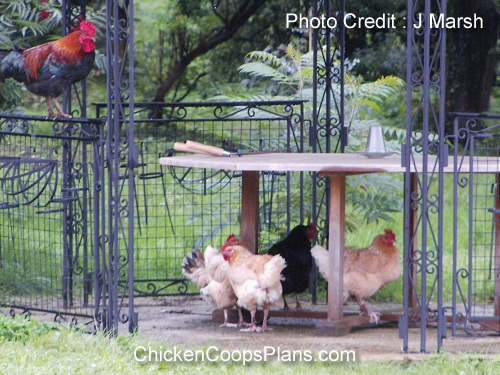Raising hens can be made as artistic as painting pictures and at the same time in hens one can create something that will not only look well but perform well. Hens will add not only to one’s artistic sense but those same hens can give a necessary artist to the daily meal that will add to the joy of living. Fresh eggs and good meaty fowls are considered by some a delicacy but eggs are as necessary as “spuds” on the table of any well regulated family. The family who keeps their fowls can always have free eggs and if planned for properly, can always have good young broilers to add to their other meats.
To get Winter eggs hens should have good comfortable houses. The hen with the cold feet will lay few eggs. The hen that has a good house free from drafts, with good litter on the floor and plenty of good wholesome food, and will lay nearly as well in Winter needs a higher protein feed than she does in Summer. This Winter feed should carry lots of good vegetable protein that will make up for the confinement that the hen must form during the bad days of Winter. Hens should not be allowed to go on the ground in the rainy days nor in extreme cold weather. Houses so built that they can get sunlight in Winter also help the hens to make eggs.
The hen must make heat enough to overcome the extra cold. She must eat enough to not only keep up her body but to turn on eggs when they are hard to make. Freedom from lice, mites and other insects will add to the health and contentment of the insect life when the hen must spend all of her time indoors.
We seldom have weather cold enough to harm the health of the hen but we do have lots of rainy weather when the hen would be better off if she was kept in. Summer weather could be the cause of hens suffering from heat but on the other hand hens should have plenty of shade in Summer and lots of good shed room in Winter.

A good mash, good scratch, plenty of green food are the three essentials things to Winter egg production or for good show plumage. Plenty of water too. A broad ration in one’s scratch is fine. One that contains many kinds of grains, are blended that they will not carry too much fats but lots of vegetable protein. When grain is best for fowls depends on the climate Corn (Indian) is a fine feed but carries lots of fats. Oats is a good food high in protein and bone building material. Wheat is the staple feed for the fowls of the Pacific Coast. Kaffir corn and Milo Maze are also good feeds, provided one gets good grains. I find that Egyptian corn is about one of the best of the mazes but that the broom corn is about the poorest. Be careful where getting these feeds to see that they carry a good feed value.
Good beef scraps are about the best high animal protein one can get, yet fish meat is a mighty food substitute for beef scraps.
Good nests are another essential thing in Winter eggs. When hens are kept in, they find little to keep them out of mischief and sometimes a broken egg will make a lot of egg eaters. Have plenty of nests. Make them all alike. Have enough litter in them so that the eggs are not easily broken. Have the nest in a dark place where the hens cannot see the eggs. If you note one of young hens eating an egg, take her out of the flock and feed her eggs shells until she is sick of them. Always keep plenty of grit and oyster or clam shell before the hens at all times. The hens that crave lime will often make egg eaters. Gather eggs often. Keep crockery eggs in the nest for nest eggs. Hens like to lay to other eggs but often if eggs are left in the nest, they will be broken and egg eaters will start by eating those broken eggs.
Some hens will be feather eaters. They will start on the hen that is not through moult and begin by picking the green feathers. Hens seldom do this unless one hen hurts its comb so as to cause it to bleed. The hens will pick at this blood and pull out the soft feathers being full of blood, will be the beginning of the egg eater. If you note a hen with a hurt comb, take her out until she gets well. If the hens show much sign of eating feathers, set in the house until you locate the feather eater, take her out and then watch the rest. A little aloes mixed with lard into an ointment and this preparation rubbed around the necks of the hens will often stop feather eating. The best way to cure the disease is to take such precautions as will never let the egg eater or the feather eater get a start in one’s flock.